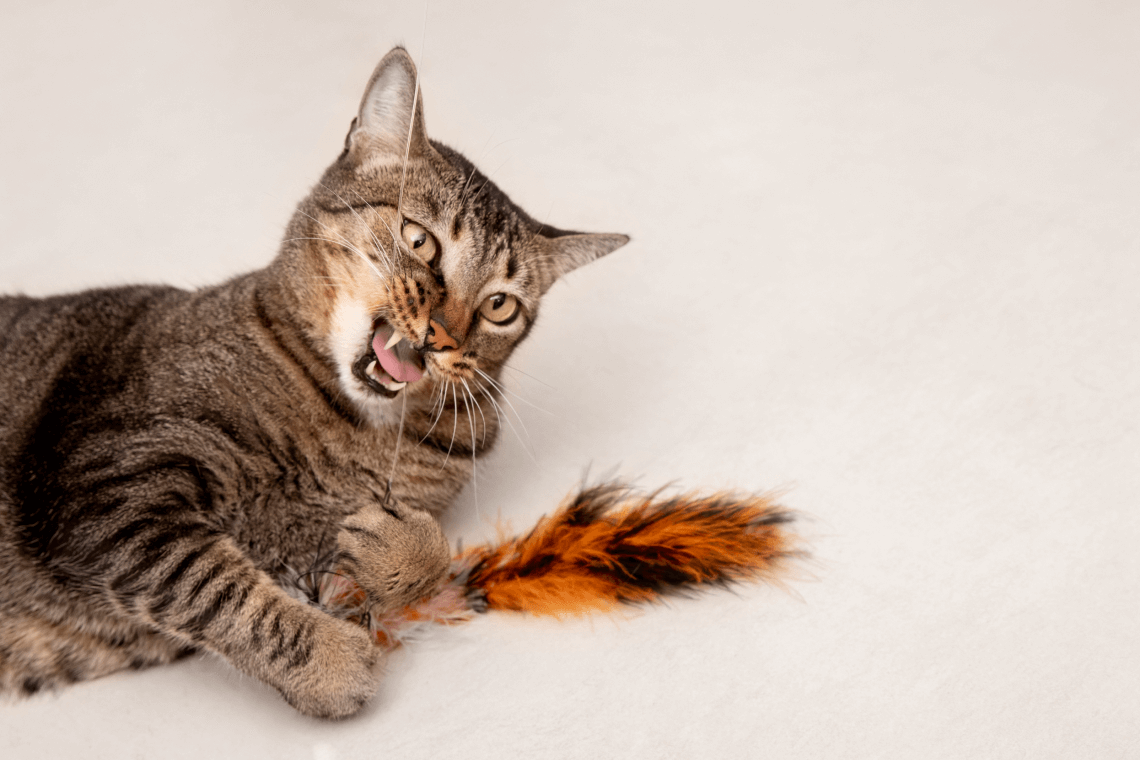Cat Behavior
Understanding Your Cat’s Body Language: A Complete Guide
If you have ever been living with a cat, he or she seems to possess a kind of mystique. Sometimes they are happily laying in your lap and within no time, they are darting around the house like they own the place. Cats tend to have individualistic personalities and even whimsical moments, but they are sending signals; they only depart from verbal cues.
To learn more about your cat and what they are trying to say, understanding their body language is key. So, whether your feline friend is content, stressed, or just needs some space – their body will tell it all. It’s time for us to unveil common, and not so obvious, signals that your cat sends you.
1. The Tail Tells All
A cat’s tail is like a mood ring—it can give you a lot of information about how your kitty feels. Here’s a breakdown of some common tail signals:
Tail Up, Curved at the Tip:
If your cat’s tail is straight up with a small hook at the tip, or it’s gently swaying back and forth, they’re feeling happy and social. This is a friendly and content cat who is in good spirits.
Tail Down:
A low-hanging tail could mean your cat is feeling scared, stressed, or submissive. If they’re crouching with their tail close to the ground, they may feel threatened or uncomfortable.
Puffed-Up Tail:
If your cat’s tail is puffed up like a bottle brush, they’re either scared or provoked. This is their way of making themselves look bigger and more intimidating to whatever has frightened them.
Tail Twitching or Flicking:
When your cat flicks or twitches their tail, they’re usually feeling irritated or annoyed. You might notice this when they’re watching birds or if you’re petting them in a way they don’t like.
Slowly Swishing Tail:
A slow, swishing tail indicates that your cat is focused, usually on something like stalking prey or playing. They’re hunting, and that toy or your feet may be the target!
2. Those Expressive Eyes
The eyes of your cat are an open book, or at least a book of their current emotions. Here’s how to read your kitty’s eye movements and pupil size:
Slow Blinking:
If your cat is slowly closing their eyes and blinking, this is a sign of affection and trust. It’s a way cats show they love you. You can even slow-blink back to show that you’re on the same page!
Wide Eyes with Dilated Pupils:
When your cat’s eyes are wide open with dilated pupils, it likely means they’re playful, excited, or possibly frightened. Pay attention to what’s going on around them to figure out which it is.
Narrowed Eyes or Squinting:
If your cat’s eyes are squinting or half-closed, they’re feeling relaxed and calm. You’ll often see this when your cat is resting or about to nap in their favorite spot.
Direct Stare with Wide Eyes:
If your cat is staring directly at you with wide eyes, they might feel threatened or are on high alert. Cats also use staring to establish dominance or to assess a situation.
3. The Meaning Behind the Ears
Your cat’s ears are like little radar dishes—they can turn in all directions and give away their mood. Here’s how to interpret ear positions:
Ears Forward:
If your cat’s ears are pointing forward, they’re feeling alert and curious. This is a sign of an interested and happy cat.
Ears Turned Back or Sideways:
When your cat’s ears are turned back or sideways, they’re likely feeling irritated or overstimulated. This often happens when they’ve had enough petting or when something nearby is bothering them.
Ears Flat Against the Head:
If your cat’s ears are pinned back against their head, they’re scared or preparing to defend themselves. Give them some space and time to calm down.
4. Body Posture: What’s Your Cat’s Stance?
A cat’s body posture is one of the clearest ways to tell how they’re feeling. Whether they’re feeling relaxed or ready to defend themselves, their stance will give you clues.
Relaxed Body:
If your cat is lying on their side or belly with legs stretched out, they’re feeling comfortable and content. A cat that rolls over and shows their belly trusts you, but not all cats want a belly rub!
Crouching Low:
A cat that’s crouching low with tense muscles is probably feeling scared or anxious. They’re trying to make themselves small and may be preparing to run or defend themselves.
Purring While Tense:
While purring is often a sign of contentment, it can also indicate that your cat is stressed or in pain. If your cat is purring but seems tense, it’s worth checking what might be wrong.
5. Vocalizations: What the Meows, Purrs, and Hisses Mean
Though this guide focuses on body language, vocalizations are closely linked to your cat’s emotions. Here’s a quick overview:
Meowing:
Cats meow to communicate with humans, and different meows mean different things. A short, high-pitched meow might be a greeting, while a longer meow can signal they want attention or food.
Purring:
Purring is usually a sign of contentment, but it can also indicate stress or discomfort. Pay attention to your cat’s body language to determine why they’re purring.
Hissing or Growling:
These sounds indicate that your cat is scared, angry, or feeling threatened. If you hear hissing or growling, it’s best to give your cat some space.
6. Whiskers and Nose: Little Details That Matter
Finally, don’t forget to pay attention to your cat’s whiskers and nose. These small details can offer more insight into their mood:
Whiskers Forward:
When your cat’s whiskers are pushed forward, they’re feeling curious or excited. This usually happens when they’re exploring something new or focusing on a toy.
Whiskers Pulled Back:
If your cat’s whiskers are pulled back against their face, they’re likely feeling stressed or anxious.
Sniffing:
Cats use their noses to explore their surroundings. If your cat is sniffing something intensely, they’re gathering information about it.
Wrapping It Up: Love and Interpretation in a Nutshell
Cats may not speak our language, but their body language can tell you a lot about how they’re feeling. By observing your cat’s tail, eyes, ears, and overall posture, you’ll get a better understanding of what they need from you.
The more time you spend with your cat, the more familiar you’ll become with their unique communication style. And once you’re in tune with their signals, your bond will grow even stronger. The next time your cat flicks their tail or blinks at you, you’ll know exactly what they’re trying to say!

